The Infection and Immunity Research Group (INIM) of IISPV has participated in a project awarded in the 2025 Health Research Call of “La Caixa” Foundation. The project belongs to the area of infectious diseases and focuses on the study of HIV virological control. It is coordinated by Dr. Ezequiel Ruiz-Mateos from IBiS (Seville) and involves four research groups in total, which have received a grant of €999,952.40.
The award ceremony took place on November 20 at CosmoCaixa in Barcelona, where Anna Rull attended as Principal Investigator of the INIM group at IISPV. The group also highlighted the participation of the Infectious Diseases Unit of Hospital Joan XXIII.
Researcher Noelia Ramírez from IISPV took part on November 28 in the Eurecat Reus symposium on epigenetic and metabolic interactions
The researcher from the Pere Virgili Health Research Institute (IISPV), Noelia Ramírez, participated in the 3rd Eurecat Symposium on Epigenetic and Metabolic Interactions, held on November 28 at Eurecat’s headquarters in Reus. Her presentation was part of a talk entitled “Advancing Precision Environmental Health: From comprehensive exposure characterisation to metabolic and epigenetic markers of effect.”
In her conclusions, she explained that environmental exposures are dynamic, come from multiple sources, and are biologically complex. “To address their impact on health, we need integrated and high-resolution approaches that combine chemistry, biology, and data science,” Ramírez said.
She added that the paradigm of Precision Environmental Health integrates “a detailed characterisation of exposure with the evaluation of effects through omics sciences, in order to reveal how specific environmental mixtures influence molecular pathways, identify early biomarkers of susceptibility, and guide more effective prevention strategies.”
An escape room, medical tests and cardiopulmonary resuscitation workshops made the work of IISPV visible. The Servei d’Emergències Mèdiques Generalitat, Ajuntament de Tarragona and the Markets of Tarragona joined the initiative held in the city centre.
Around 450 people took part this Saturday, 22 November, in the city centre of Tarragona in the event ‘La recerca en salut surt al carrer’, organised by Institut d’Investigació Sanitària Pere Virgili (IISPV) as part of its 20th anniversary. Throughout the morning, dozens of people participated continuously in the activities, which were open to everyone. The main goal was to bring citizens closer to the work carried out by the Institute in the region.
Plaça Corsini and the Mercat Central became a large laboratory and a space for scientific outreach, where activities —an escape room, medical tests and resuscitation workshops with a visit to an ambulance— attracted people of all ages.
The escape room ‘Investigate and… help us!’ caught the attention of about 70 people. The medical tests ‘Here we take care of you!’, located inside the Market, worked without interruption, serving up to 100 people. Participants underwent early screenings for diabetes and prediabetes, blood pressure measurements to assess cardiovascular risk, and body composition analysis tests.
As for the cardiopulmonary resuscitation workshops ‘Get motivated and resuscitate!’, they involved professionals from IISPV and the Servei d’Emergències Mèdiques (SEM) of the Generalitat, who carried out simulations with mannequins in the square, teaching how to identify a cardiac arrest and perform intervention manoeuvres. In addition, citizens had the chance to see an SEM ambulance up close, which was displayed in the same square. Around 280 people took part in this activity.
The organisation of the event was supported by the SEM of Generalitat, the Ajuntament de Tarragona and the Mercats de Tarragona.
These microorganisms are essential for the product to meet the international definition of kefir established by WHO and FAO.
Around 80% of the products labelled as “kefir” in Spain do not provide information about the presence of yeasts. These microorganisms are necessary for the product to meet the international definition of kefir set by the Codex Alimentarius, prepared jointly by the World Health Organization (WHO) and the Food and Agriculture Organization (FAO). This is the conclusion of a study led by a research team from the Department of Biochemistry and Biotechnology of the Universitat Rovira i Virgili and the Pere Virgili Health Research Institute (IISPV), presented at the latest congress of the Spanish Federation of Nutrition, Food and Dietetic Societies.
Kefir is a fermented dairy food that differs from other similar products, such as yogurt, because of its mixed fermentation, which is the result of the combined action of lactic acid bacteria, acetic acid bacteria and yeasts. In the study, carried out in the summer of 2025, products labelled as “kefir” were analysed in the main supermarkets of the country, selected according to the market share report of Kantar Worldpanel, which includes national and regional chains and covers more than 56.7% of the market. The labelling of 170 drinkable and spoonable kefirs was evaluated, paying special attention to the explicit declaration of yeasts.
The results showed a great variability in the information provided by manufacturers, which, according to the research team, may cause confusion among consumers and make it difficult to correctly identify the product according to international standards. “In many cases, the name ‘kefir’ is used as a commercial claim, even though the products do not meet the international definition, which requires the presence of yeasts,” explain Lucía Iglesias-Vázquez and Nadine Khoury, researchers of the study.
The authors warn that the current European regulation on food information does not require declaring the presence of microorganisms on food labels. Moreover, in some fermented dairy products it even allows the omission of the list of ingredients, which may reduce transparency and contribute to the trivialisation of a food like kefir, which offers many health benefits.
Faced with this situation, the research team suggests that the industry should adopt clearer and more consistent labelling practices, such as explicitly indicating the presence of bacteria and yeasts. “Moving towards a harmonised European regulation that sets minimum microbiological criteria would be essential to protect the authenticity of kefir and strengthen consumer confidence through a clear list of ingredients,” say Nancy Babio and Jordi Salas, professors and researchers from the Department of Biochemistry and Biotechnology of URV, IISPV and CIBEROBN.
Next Saturday, November 22, the Institute will hold the event ‘La recerca en salut surt al carrer’, which includes an escape room, medical tests, CPR workshops, and a demonstration of how an ambulance works.
The Institut d’Investigació Sanitària Pere Virgili (IISPV) will organize the fun event ‘La recerca en salut surt al carrer’ on Saturday morning, November 22, in the center of Tarragona. This initiative is part of the celebrations for the Institute’s 20th anniversary. It was already held in Reus last October and was very well received, with more than 500 people taking part in the activities. Now, IISPV brings the event to Tarragona, specifically to Plaça Corsini and the Mercat Central. Activities will include an escape room about the Institute, non-invasive medical tests, CPR workshops with mannequins, and a demonstration of how an ambulance works. All activities are free, but participants must register in advance on the IISPV website to join the escape room.
The event is organized in collaboration with the Tarragona City Council, Tarragona Markets, and the Servei d’Emergències Mèdiques (SEM) of the Generalitat. Its goal is to help citizens learn more about the work of this biomedical research institute, which has been operating in southern Catalonia for 20 years. The activities planned are:
Escape room ‘Investiga… I ajuda’ns!’
Four groups of five people will help IISPV stop an attack that aims to sabotage the work of its researchers. Each group will face different challenges to protect the four research areas of IISPV: metabolism and nutrition, oncology, mental health and neurosciences, and infection, immunity and environment. The activity lasts about 45 minutes and requires prior registration. It will take place at Tarragona Espai Comerç”, and the meeting point is the entrance to the Central Market on Cristòfor Colom Street. Time slots are: 10:30, 11:30 and 12:30.
Medical tests ‘Aquí et cuidem!’
Throughout the morning, the interior of Tarragona’s Central Market will host several non-invasive medical tests, available to anyone interested:
Workshops ‘Anima’t i reanima!’
All morning long, Plaça Corsini will host the ‘Anima’t i reanima!’ workshops, led by professionals from IISPV and SEM. Using mannequins, participants will learn how to identify a cardiac arrest and how to perform CPR. They will also get to see how an ambulance works, with one on display in the square.
The Solidarity Walk ‘Let’s Take a Step Against Diabetes’ aims to raise awareness among the population about the importance of adopting healthy lifestyle habits and to support biomedical research carried out in the region. All the funds raised will go to the Diabetes and Associated Metabolic Diseases Research Group (DIAMET) at IISPV, which focuses on finding new knowledge and strategies to improve the prevention, diagnosis, and treatment of diabetes and other metabolic diseases.
“The Perafort Town Council reaffirms its commitment to health, solidarity, and medical research through this initiative—values we consider essential for the well-being of our citizens. The funds are allocated to the IISPV to support research and scientific progress in this field,” said the mayor of Perafort, Joan Martí Pla i Pla. The Perafort Town Council thanks all the individuals and organizations involved and invites everyone to join this solidarity cause. Taking a step against diabetes is taking a step for everyone’s health.
There are different types of diabetes, but the most common are type 1 and type 2. Type 1 diabetes affects about 0.2% of the population in Spain, and around 10% of diagnosed cases are in young people and children. Type 2 diabetes affects between 6% and 14% of the population. This percentage depends on the age group considered, but the older the person, the higher the incidence.
The director of the IISPV, Joan Vendrell, explains that “diabetes is not visible, but it can be controlled with information and a healthy lifestyle. In this sense, events like the walk are very valuable, as they help raise awareness about the disease and its impact, and also promote the work we do. Moreover, they are an opportunity for people to contribute to the development of the various research projects underway at the Institute.”
With a registration fee of €5, participants will receive a commemorative T-shirt, enjoy breakfast and drinks in Els Garidells, and take part in a raffle of products offered by the event’s sponsors after the walk. Registration is open until November 21st, 2025, through the following link: https://serveis.iispv.cat/events/desena-caminada-contra-la-diabetis
The Palau Firal and Congress Centre of Tarragona became a massive party this Saturday with the solidarity event Mamapop.
With more than 900 tickets sold and nearly 85% of the venue filled, all the profits from the concert will go directly to breast cancer research at the Pere Virgili Health Research Institute. Tarragona, 2 November 2025. The iconic songs from the sixties and seventies set the rhythm of solidarity this Saturday at the Palau Firal and Congress Centre of Tarragona.
Over 900 people took part in an emotional evening that once again showed how music can be a powerful tool for solidarity. With almost 85% of the venue full, Mamapop 2025 premiered its tenth show in Tarragona, featuring around thirty professionals on stage performing classics by Los Brincos, Nino Bravo, Marisol, Raphael, Duo Dinámico, Fórmula V and Camilo Sesto, among others.
Once again, all the money raised from Saturday’s concert will be used entirely for breast cancer research at the Pere Virgili Health Research Institute, which is celebrating its 20th anniversary this year. Manel Simon, director and founder of Mamapop, thanked “the collective effort of the audience, professionals, supporting organisations and volunteers who helped turn music and entertainment into research, hope and future.”
Mamapop Tarragona was made possible thanks to the support of Fundación Repsol, Factor Energia, Tarragona City Council, the Palau Firal and Congress Centre of Tarragona, Tarragona Provincial Council, the Port of Tarragona and Fundación La Caixa. Several companies and organisations also collaborated, including Rotary Club Tarragona, Tarragona Basketball Club and Nàstic de Tarragona.
This study is a step forward in the search for more accurate diagnostic and prognostic tools for prostate cancer
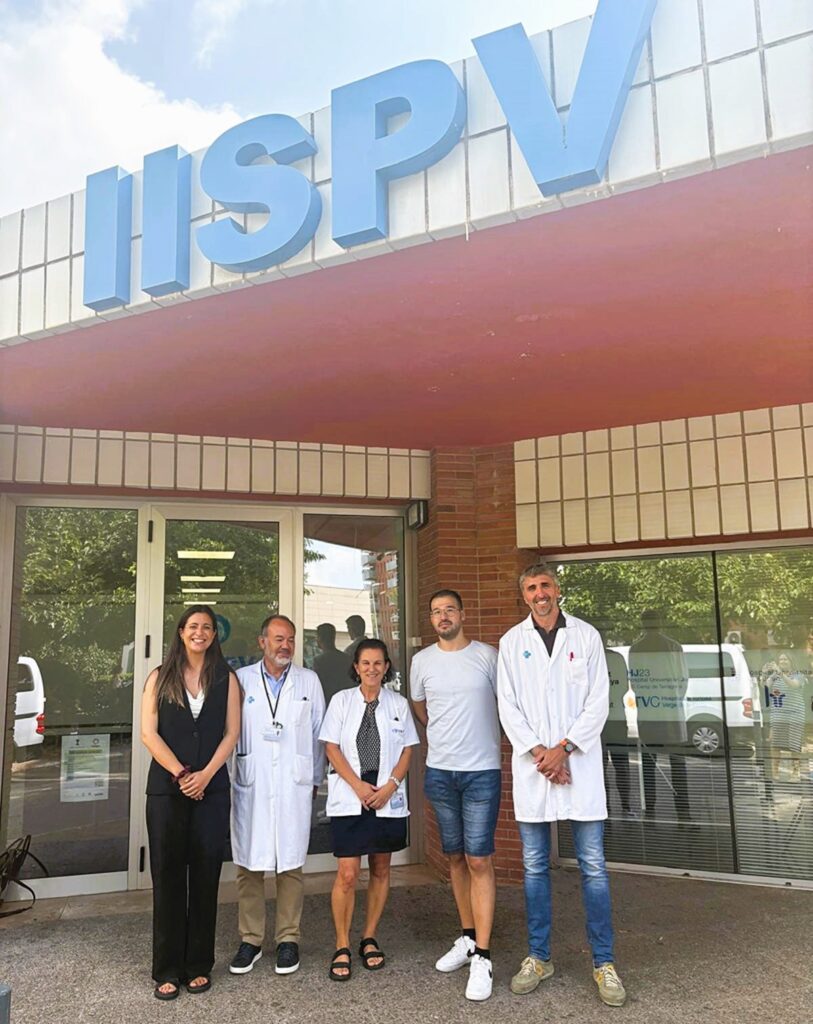
Researchers from the Institut d’Investigació Sanitària Pere Virgili (IISPV), in collaboration with the Urology Department at the Joan XXIII University Hospital in Tarragona, have made promising progress in improving the diagnosis and monitoring of prostate cancer. The study, led by Matilde Rodríguez Chacón and Xavier Ruiz-Plazas, a specialist from the Urology Department at the same hospital, both members of the Research Group on Disease Biomarkers and Molecular Mechanisms (DIBIOMEC), was recently published in the Journal of Urology, the official journal of the American Urological Association (AUA). The research explored a panel of biomarkers found in semen samples. In the cases studied, the results were promising when combined with traditional clinical variables. Preliminary data suggest that this approach could be useful in several clinical situations, including early detection, identifying patients at higher risk of recurrence after curative treatment, and monitoring patients under active surveillance for this type of cancer.
Prostate cancer is the most common tumor among men in the Tarragona region, with around 670 new cases each year. At the national level, more than 30,000 cases are diagnosed annually, making it one of the leading causes of cancer-related death in men. This advancement, co-authored by Dr. Alves-Santiago and Dr. Altuna-Coy, both members of the DIBIOMEC group, is an important step toward personalized medicine in urology. It offers more precise tools for early detection and individualized clinical decision-making. Although more prospective studies with a larger number of patients are needed, the results so far are very promising.
Link to the scientific publication: Alves-Santiago M, Altuna-Coy A, López-Ribelles P, Arreaza-Gil V, Segarra-Tomás J, Ascaso-Til H, Garcia-Fontgivell JF, Sánchez-Martín S, Bernal-Escoté X, Ruiz-Plazas X, Chacón MR. A Semen Panel Signature Comprising sTWEAK Cytokine Levels and Expression of exomiR-221-3p and exomiR-222-3p for Assessing Prostate Cancer Prognosis, Diagnostic Utility, and Detection of Upgrading During Active Surveillance. J Urol. 2025 Aug 27:101097JU0000000000004749. doi: 10.1097/JU.0000000000004749. Epub ahead of print. PMID: 40863180.
For people who smoke 20 or more cigarettes a day, the risk doubles. These are the findings of a study led by the Human Nutrition Unit at URV.
Smoking significantly increases the risk of developing type 2 diabetes. However, drinking alcohol—even in small amounts—does not offer any protection against this disease, despite what some previous studies suggested. This has been confirmed by a new international study led by Indira Paz-Graniel, a researcher at the Human Nutrition Unit of Universitat Rovira i Virgili (URV), in collaboration with the Nutritional Epidemiology Research team from Université Sorbonne Paris Nord (France).
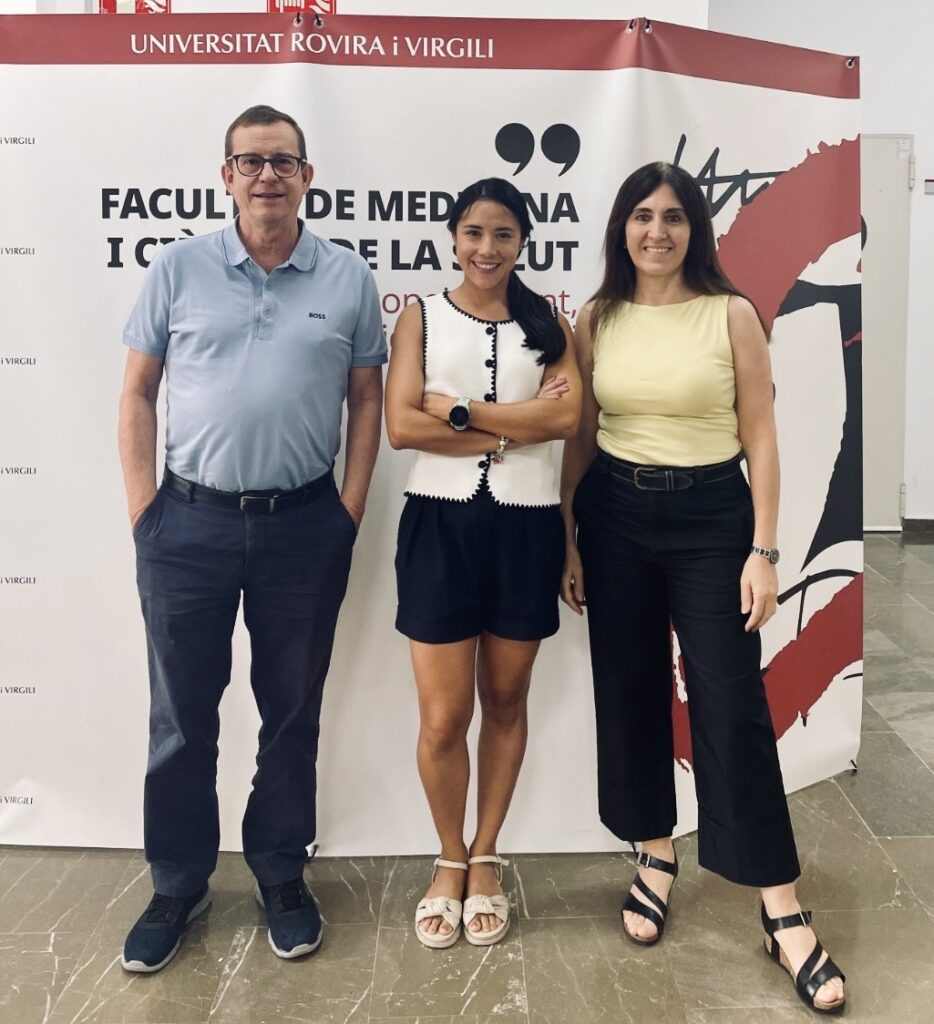
The research studied the combined effects of tobacco and alcohol on the development of type 2 diabetes, a topic that had not been explored much until now. The goal was to find out whether both habits, beyond their individual impact, could have a combined effect on the risk of getting the disease.
To do this, data from more than 110,000 participants in the NutriNet-Santé cohort—one of the largest public health studies in Europe—were used. Over an average follow-up of 7.5 years, 1,175 new cases of type 2 diabetes were diagnosed.
The results show that people who smoke or have smoked at some point have a 25% higher risk of developing type 2 diabetes compared to those who have never smoked. The risk is especially high for those who smoke 20 or more cigarettes a day, as they are twice as likely to develop the disease compared to light or moderate smokers.
The research team also found that low or moderate alcohol consumption was not linked to any protective effect against type 2 diabetes. These findings go against previous studies that suggested drinking one glass of wine a day—or the equivalent—could reduce the risk of developing the disease.
When the combined use of tobacco and alcohol was analyzed, no additional increase in risk was found. This suggests that, at least in the studied population, both habits do not act together to raise the risk of diabetes.
“We know that smoking is a clear risk factor, but we were surprised to see that alcohol alone did not change the risk of diabetes,” said Indira Paz-Graniel. However, she warned that the results should be interpreted with caution, since the NutriNet-Santé cohort is mostly made up of women with a high level of education and healthy lifestyles. “More studies in diverse populations are needed to better understand the interaction between alcohol and nicotine,” she added.
The study also included Professor Jordi Salas-Salvadó, director of the Human Nutrition Unit at URV, and Professor Nancy Babio. Both are members of CIBERobn and the Pere Virgili Health Research Institute (IISPV), along with the lead researcher.
The results were published in the American Journal of Preventive Medicine (August 2025) and presented at the International Congress of Nutrition organized by the International Union of Nutritional Sciences (IUNS), recently held in Paris.
Reference: Paz-Graniel I, Kose J, Duquenne P, et al. Alcohol, smoking and their synergy as risk factors for incident Type 2 Diabetes. American Journal of Preventive Medicine. 2025 Jul 31:108011. doi:10.1016/j.amepre.2025.108011
Throughout the day, researchers and technical staff from the Institute carried out activities in different parts of Reus city centre to bring science closer to the public.
The Pere Virgili Institute for Health Research (IISPV) has closed the event ‘Health Research Hits the Streets’ with a very positive outcome. The event took place all day in several locations around Reus city centre. A total of 528 people participated in the scheduled activities, all designed to make biomedical research more accessible to the general public.
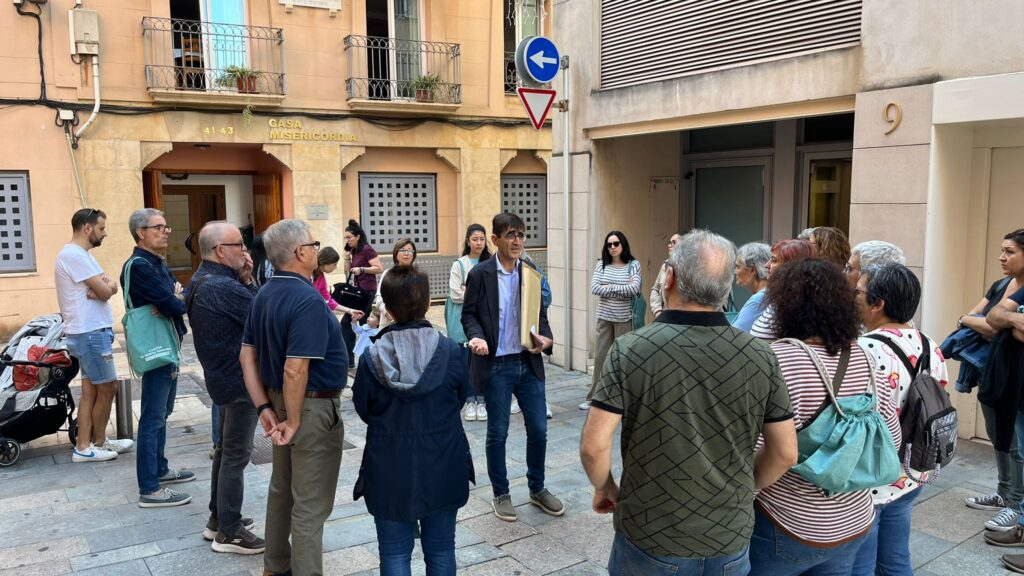
The event was organised to celebrate the 20th anniversary of the IISPV. The organisers highlighted the warm reception of all the activities. In this regard, Joan Vendrell, director of the IISPV, stated: “The high level of participation shows that people are interested in learning what we do in the labs. That’s why we are considering continuing with public activities that allow us to share our work with everyone.”
In total, four free activities were offered: an escape room, with 112 participants; a walking tour through the city centre, with 114 attendees; a space where over 77 people received medical tests; and a series of science workshops with experiments to explain how the human body works. This last activity, the only one that didn’t require prior registration, attracted more than 225 visitors.
The four activities took place in different areas of the city. The old hospital on Sant Joan Street hosted the escape room and the science workshops, bringing back its scientific role for one day. The medical tests were carried out at the Centre de Lectura, a popular meeting place for locals. Finally, the walking tour passed through streets such as Hospital Street, Santa Anna Avenue and Ample Street, where participants learned about buildings historically linked to health.
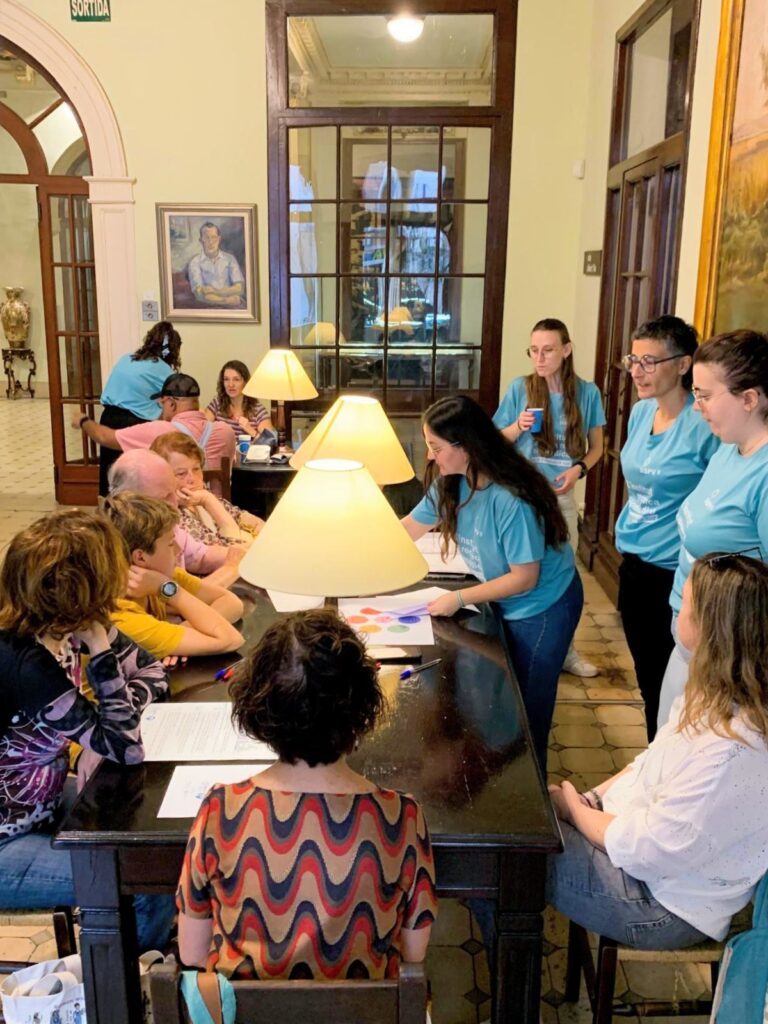
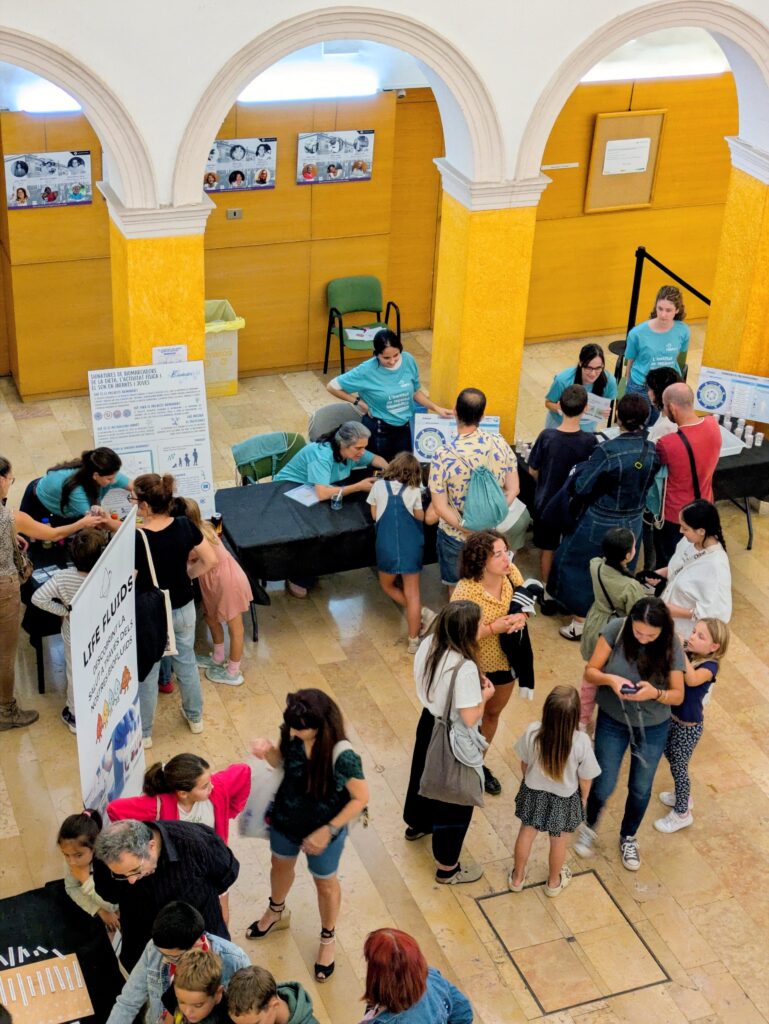
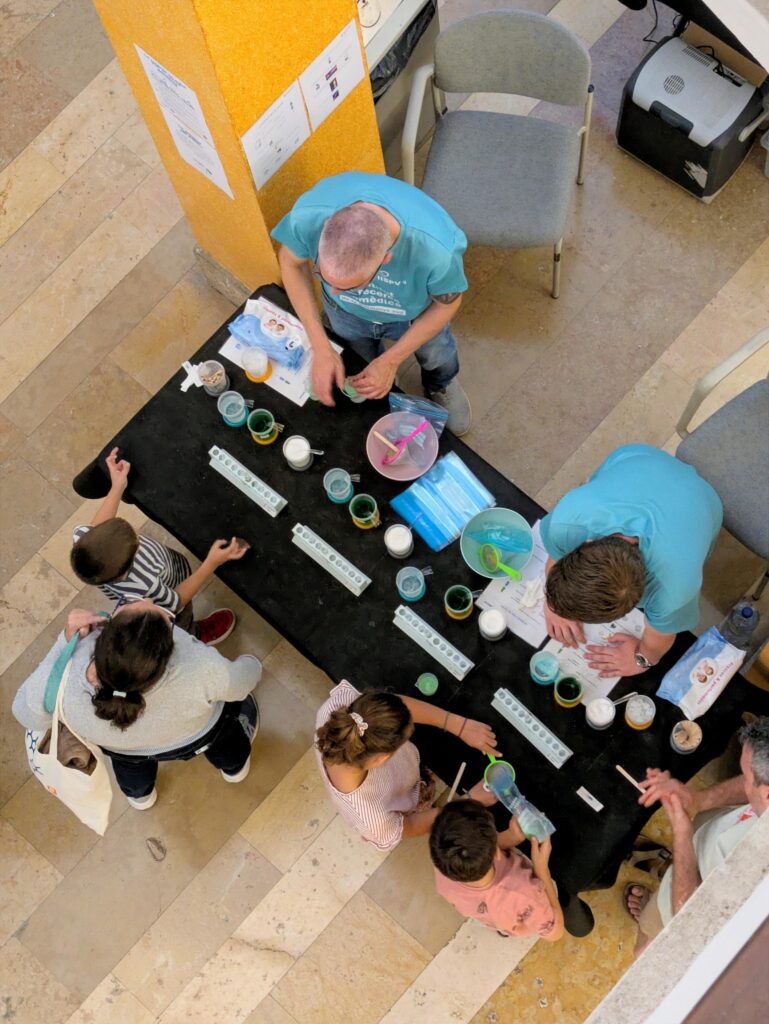
Around forty researchers and technical staff from the IISPV made this event possible. “These outreach activities are enriching for everyone involved. On one hand, they give people the chance to learn about health research directly from those working in laboratories. On the other hand, they allow us to understand people’s concerns and respond to them,” explained the director of the IISPV. The Reus City Council and the Centre de Lectura supported the initiative and helped promote the biomedical research carried out in the region, which is constantly developing new projects and studies to improve people’s health.
The 20th anniversary of the IISPV
“Health Research Hits the Streets” is one of several public activities organized to celebrate the 20th anniversary of this Institute, which has been working in the southern Catalonia area for the past 20 years. Throughout 2025, a series of events have been planned to explain not only what the IISPV does, but also how important and relevant biomedical research is for people’s lives.

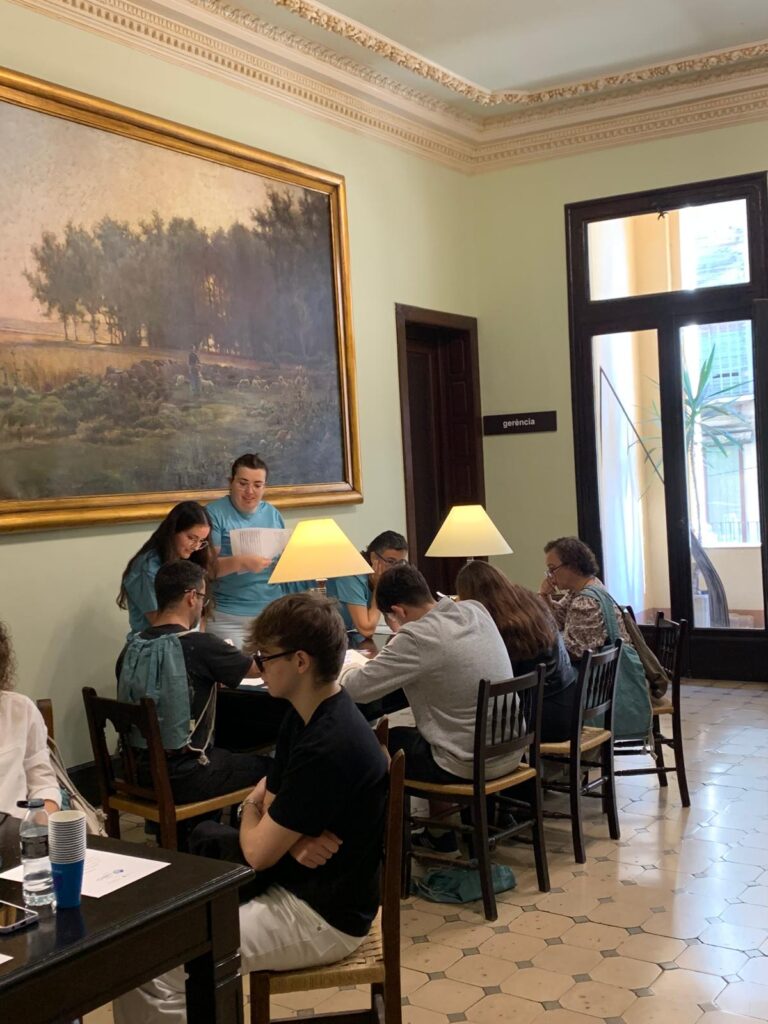
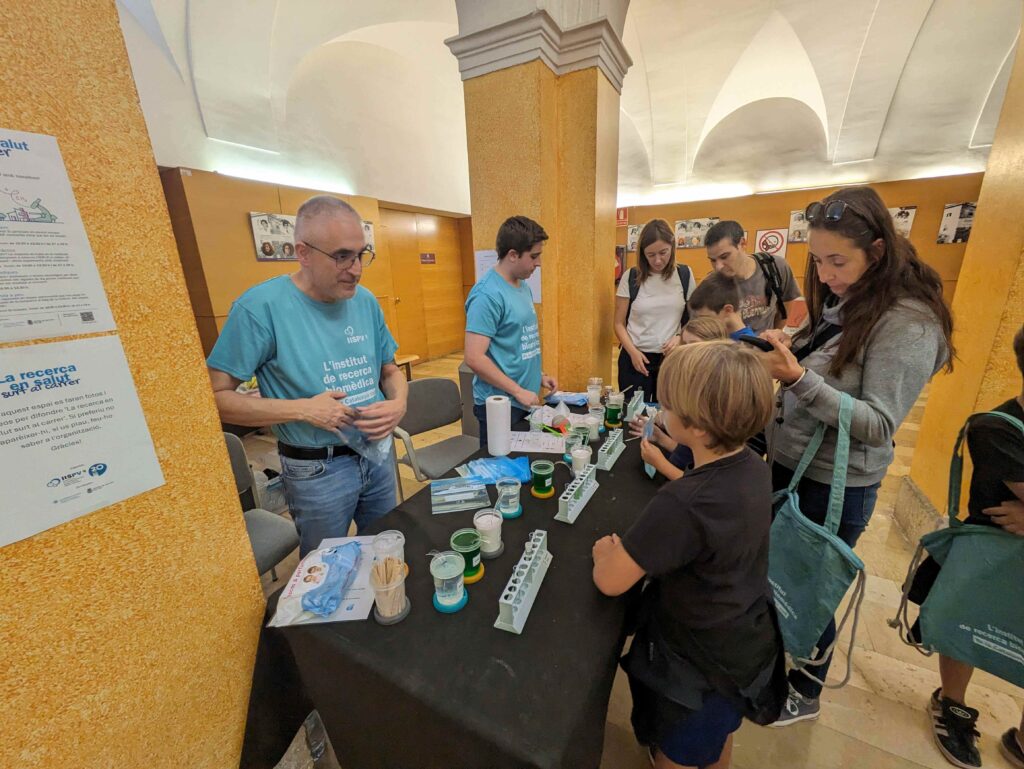
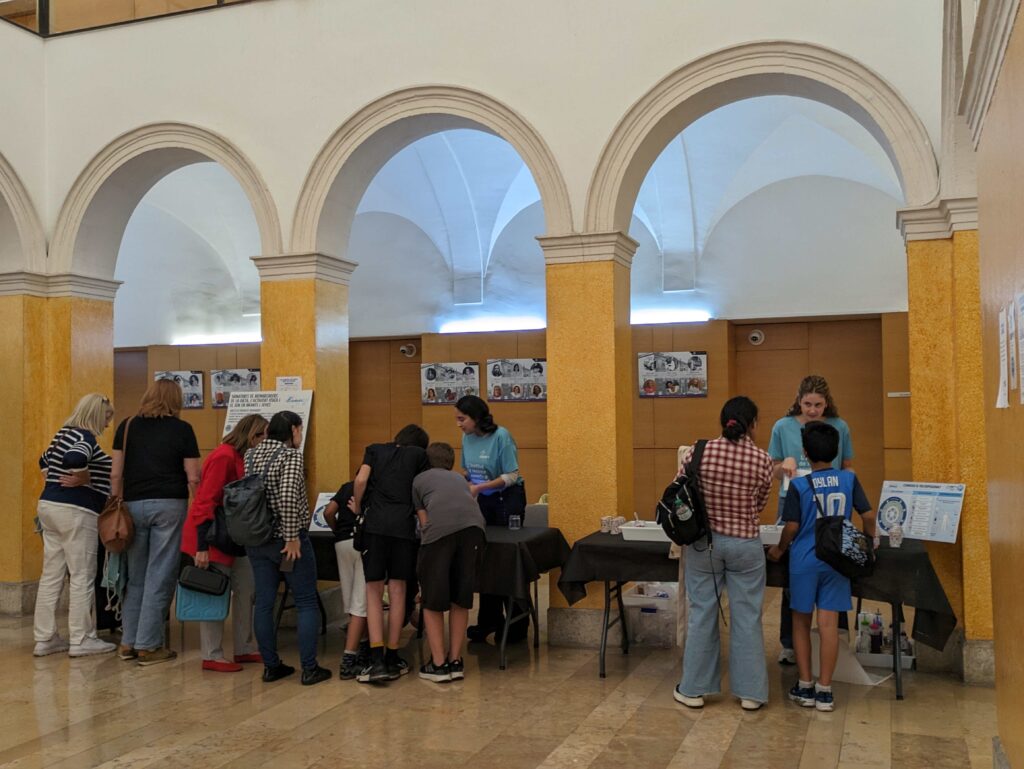
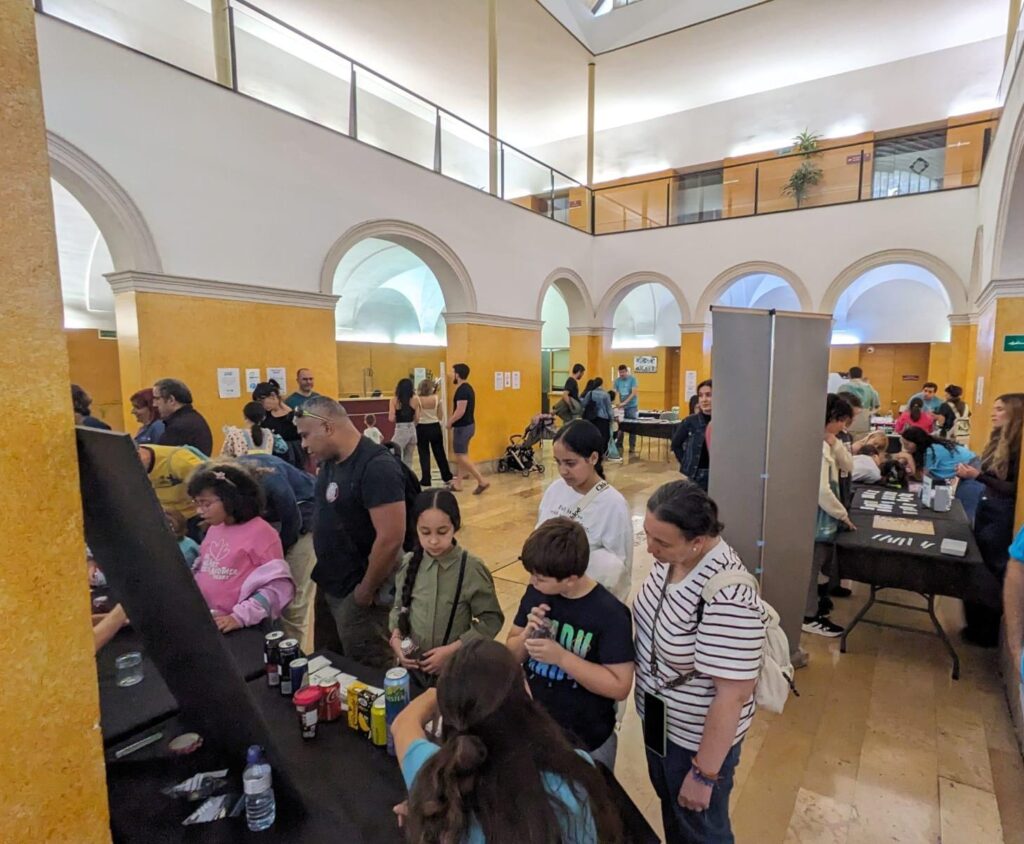
“Health Research Hits the Streets” is one of several public activities organized to celebrate the 20th anniversary of this Institute, which has been working in the southern Catalonia area for the past 20 years. Throughout 2025, a series of events have been planned to explain not only what the IISPV does, but also how important and relevant biomedical research is for people’s lives.
The anniversary celebration will end on 3 December with an institutional event at the Bartrina Theatre in Reus. During the event, the Institute’s new image will be presented, and there will be a talk by the well-known communicator and writer Elsa Punset, who specialises in leadership, creativity and team management. Registration for the event will soon be available on the IISPV website, and it will be chaired by the Minister of Research and Universities of the Government of Catalonia, Núria Montserrat.